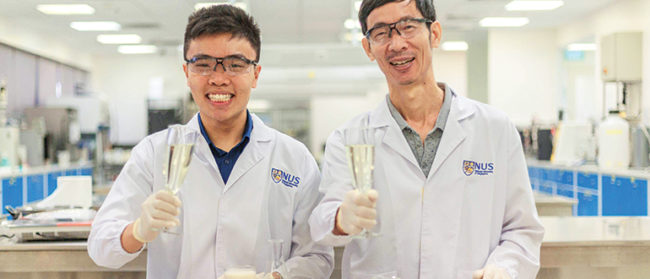By the fading light of day in Cambodia’s southeast, Hoerm Oerun squats in her orchard, sweeping the dust beneath her barren trees. Nothing stirs in the enclosing rice paddies, but the grandmother of four presses on, pausing intermittently to behold the withered palm fronds hanging limply in the breeze.
At twilight, a faint chittering breaks the silence. “Here they come,” she exclaims. Overhead, the dead leaves rustle and twitch to life as, one by one, inky forms emerge, pirouetting in mid-air; a bewitching swirl of wings. A moment later, a thick ribbon of shapes swarms forth, raising a crescendo of shrill squeaks before turning tail into the dusk: Oerun’s bats are leaving home.
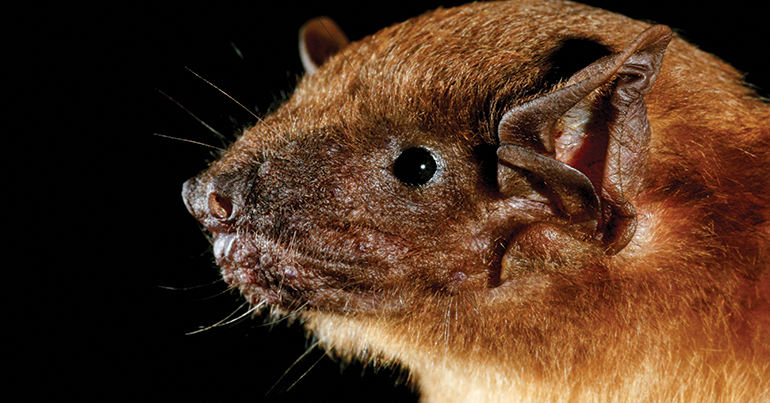
Encircling Phnom Penh, Kandal province’s verdant plains supply the capital with its daily rice. “Most people in the village are farmers,” Oerun says, “and most of them use the guano.” She pats the swollen sack at her feet. Inside, a gift from above: nutrient-rich bat faeces, commonly known as guano. If farmed right, this ‘black gold’ falls from the sky in great abundance. Oerun has perfected the technique over three decades.
Every day, she sweeps up the pellets collecting in murky rings below her trees before drying and packaging her bounty for sale. This “black gold”, as bat experts call it, is then snapped up by local rice farmers. “They come to me directly, so I don’t need to go to the market,” she beams. With more than 30 trees to her name, Oerun can collect 12kg of the precious waste per day, which can fetch up to $10.
The secret to her success hangs in the drooping canopies, occupied by bats in the thousands. These creatures have darkened horizons around farmland for time immemorial, attracted by the glut of insects, before coming to rest in peripheral sugar palm trees. Sharp-eyed farmers noticed colonies’ preference for dense foliage and figured that by bolstering canopies with palm leaves, the pest-guzzling bats would come to roost – bat farming was born.
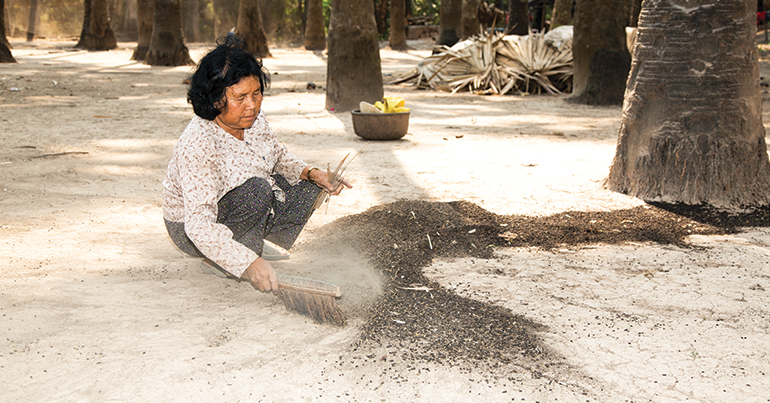
Construction of the artificial roosts is down to local roost makers who bundle 50 or more dry palm fronds together before hoisting and hanging them up to 30 metres above ground – often making the precipitous climb with little more than their bare hands and feet.
While floods, drought and unsustainable practices lay waste to paddies and pastures, this cottage industry provides a safety net for hundreds of rural Cambodians who stand to make up to $22 a month in guano sales per roost – and with some harvesting from more than 20 roosts, this can add up to more than $5,000 a year.
The practice of applying guano to crops is not new – bird guano was highly prized by the Incas and, in the 19th century, wars were fought over rights to the resource – but the practice of bat farming in this region is unique to Cambodia and a neighbouring area of southern Vietnam, according to Neil Furey, who has studied bats in Southeast Asia since 1997.
I started with my late husband, one or two years after the Pol Pot regime ended … we used to grow rice, but now we only sell guano
Hoerum Oerun, Guano farmer
While its origins remain a mystery, the practice of bat farming has been passed down through generations, dating back to at least the 1960s, with numerous bat farmers interviewed by Furey tracing it back to their ancestors.
“I started with my late husband, one or two years after the Pol Pot regime ended,” Oerun recalls. “We used to grow rice, but now we only sell guano.” Likewise, more than half of the bat farmers surveyed by a Royal University of Phnom Penh (RUPP) researcher in 2013 reported that guano sales were their main source of income.
“When I used chemicals on our rice, the soil was very dry,” Oerun adds, “but when I apply the guano, the soil looks very healthy and crops grow very well. There’s nothing better than bat guano.”
The science confirms this: a 2014 RUPP study led by Sothearen Thi found that three of five economically important plant species – eggplant, jackfruit and longan – experienced greater growth with applications of bat guano compared to chemical fertiliser. This was despite notably lower levels of essential macronutrients in the guano, which contained just 50% of the nitrogen, 17% of the phosphorous and 3% of the potassium of the chemical fertiliser. Thi puts the guano’s superior growth-boosting properties down to the presence of organic matter, carbon, important micronutrients and beneficial microflora, which are absent from chemical fertiliser.
“Bat guano improves soil quality and increases soil organic matter and water retention,” notes Furey – welcome news in Cambodia, the country with the lowest rate of irrigated arable land in all of Asia, according to 2014 World Bank data.
Soils across the continent are severely short on nutrients, particularly vital micronutrients that synthetic macronutrient-based fertilisers help deplete, further reducing soil’s ability to sustain healthy crops and requiring ever greater volumes of fertiliser.
The issue is especially pertinent in Cambodia, where farmers often lack the means to improve low soil fertility, and climate change adaptation practices, such as sowing more-resistant rice varieties, are little understood. Interest in such practices is growing, however, making the time ripe for using guano as a restorative.
Bat guano’s “agro-ecological benefits, ease of incorporation into existing farming systems and… opportunities to diversify community incomes ” got the attention of Andrew Billingsley, landscape director for Conservation International Cambodia. The NGO plans to build on local knowledge in order to expand the practice throughout the country.
Bat farmers are unanimous on one point: supply cannot keep up with demand. A good deal of that demand comes from one of Cambodia’s precious few heritage products: Kampot pepper. Producers may only commercialise the spice as members of the Kampot Pepper Promotion Association, which stipulates traditional growing methods free of chemical inputs – fertilising vines with the nutrient-laden guano is a no-brainer. Plantation owners may knock on Oerun’s door just once a year, but “when they come, they buy a lot – maybe 400kg”, she says.
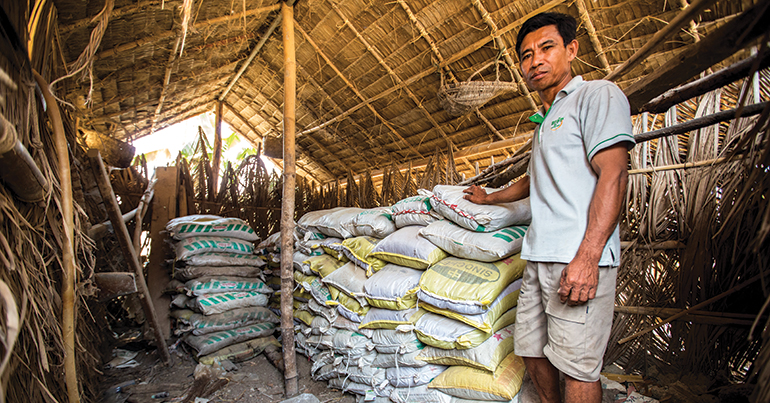
Elsewhere in the region, the benefits bats bestow upon agriculture have long been understood. Wat Khao Chong Pran in Thailand’s Ratchaburi province was largely built on sales of guano from a colony in an adjacent cave. What’s more, the voracious appetites of the bats save local rice farmers at least $300,000 a year in pesticides. In fact, according to world-renowned bat expert and founder of Bat Conservation International Merlin Tuttle, “the benefits from pest control may substantially exceed the economic value of guano fertiliser sales”.
In Cambodia, decades-long onslaughts of seductive marketing has boosted use of pesticides, some of which are highly toxic to human health, according to University of Copenhagen researcher Hanne Klith Jensen, who studied the health effects of pesticide products in the Kingdom, including those containing a number of the 116 hazardous chemicals banned by the government.
A study published this year in the peer-reviewed journal Science of the Total Environment found that application was 251% higher when farmers turned to pesticide shopkeepers rather than neighbours for advice on how to use products, which are labelled in languages such as Vietnamese, Thai and Chinese, but rarely Khmer.
In a separate study, 88% of farmers reported pesticide poisoning, with symptoms ranging from vomiting to loss of consciousness and seizure. While research about the long-term effects of pesticide exposure is ongoing, according to Jensen, “concerns about developing certain types of cancers have been raised”.
Bats, on the other hand, may actively diminish disease burdens: a University of Michigan study found almost a third fewer mosquito eggs where bats were present, meaning their insect diet could effectively reduce transmission of mosquito-borne diseases, such as malaria and dengue fever.
While most bat farmers stated they ‘rarely’ used pesticides on their land, 60% claimed that pesticide use in the area negatively impacted their bat farms, linking it with bat deaths. The chemicals in pesticides can spell disaster for bats – they “kill bats more effectively than [they kill] mosquitoes”, laments Tuttle. “Over time, bats die out, while mosquitoes develop resistance, so larger quantities or increased toxicity are required.”
The consequences of this can be far-reaching, as Manuela Allara of the UN’s Food and Agriculture Organisation points out: “If the [predator–pest] balance is broken by improper use of pesticides, the pests may [develop resistance]… causing outbreaks.”
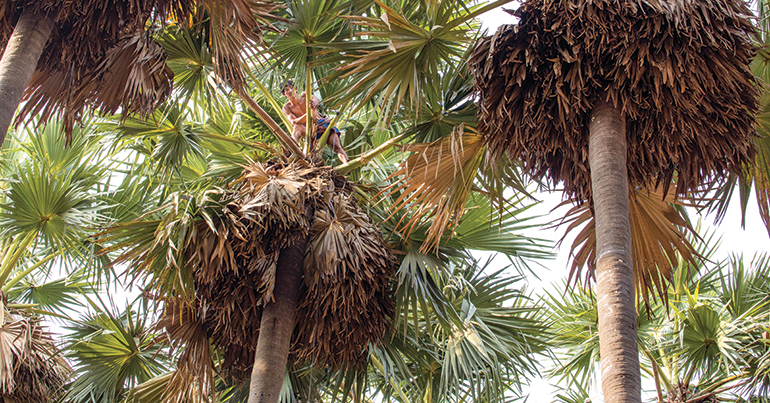
One such outbreak, of brown planthopper, a species of insect that feeds on rice plants and now requires doses of pesticides 500 times greater than in the past, has resulted in cumulative losses to rice crops throughout Asia since 2008 estimated in the hundreds of millions of dollars. Not in Vietnam’s Mekong Delta, though, where reduced pesticide spraying allowed predators – such as bats – to neutralise planthoppers.
Tuttle believes that bat farms could work throughout the region: “The practice clearly offers great potential for promoting both bat conservation and local livelihoods.”
Cambodia is home to hundreds of bat farms, says Furey, so it’s fair to assume that the value of bats’ service to agriculture is economically significant. He calculates that 1,000 farm bats eat between 9kg and 26kg of insects per night, including many plant pests, meaning they could be gobbling up to 9.5 tonnes of insects per year. As University of Tennessee professor of ecology Gary McCracken points out: “Bottom line, bats save farmers a lot of money.”
Without Oerun’s estimated 30,000 bats, the lot of farmers in her village would no doubt be very different.

